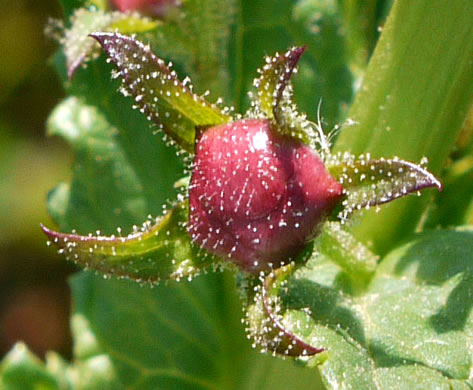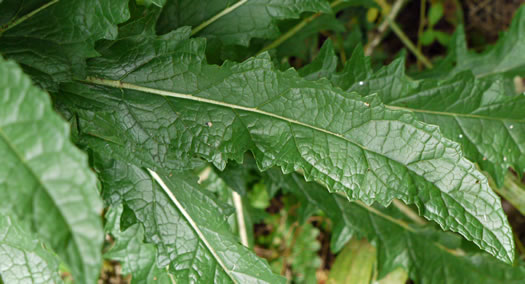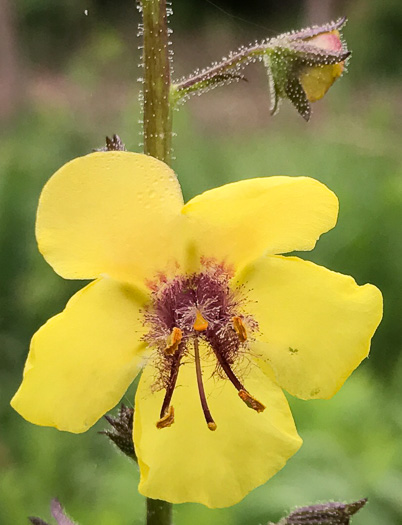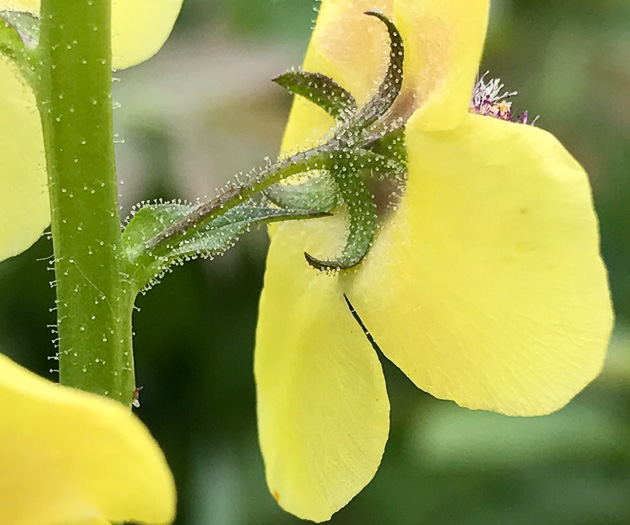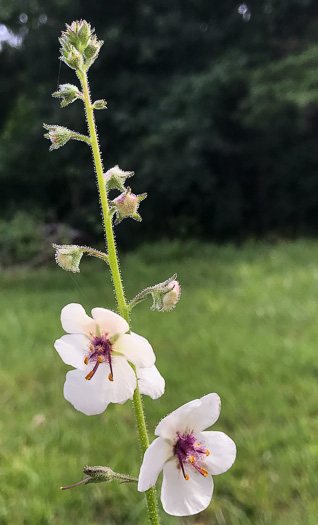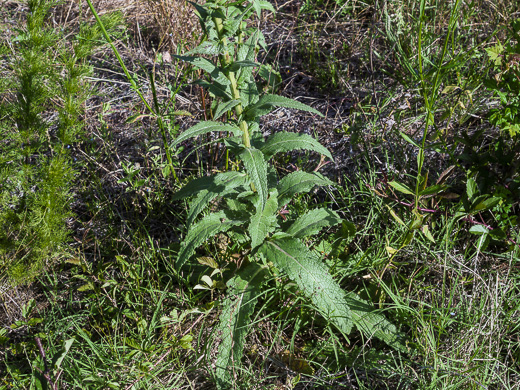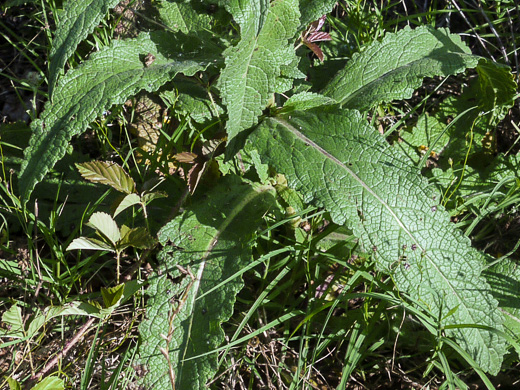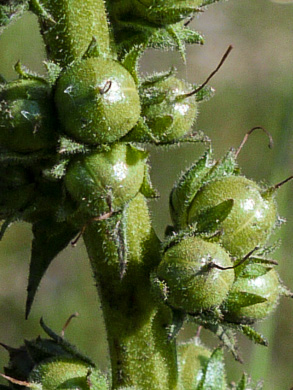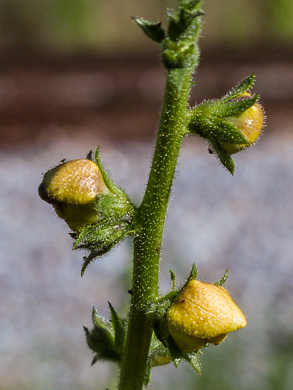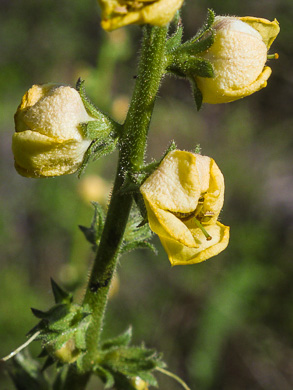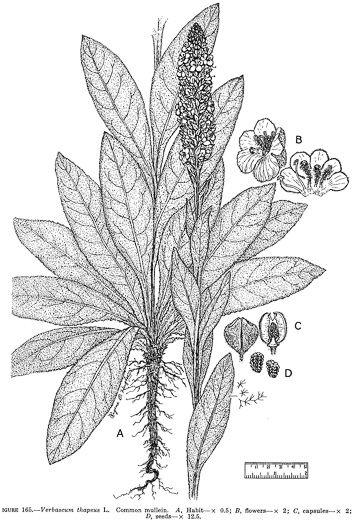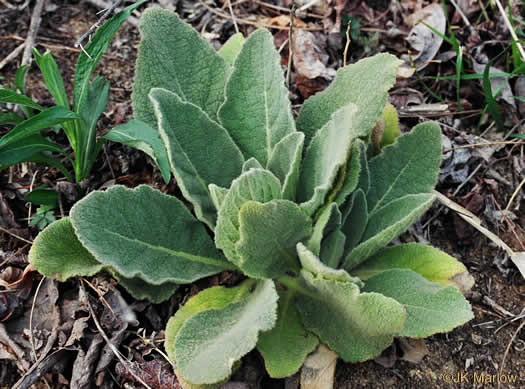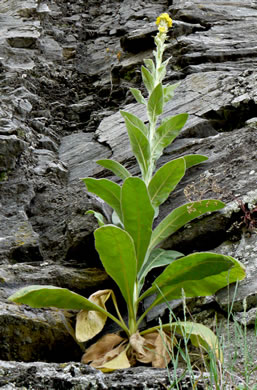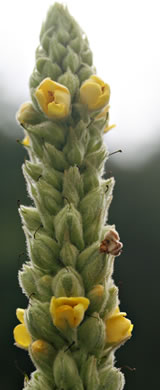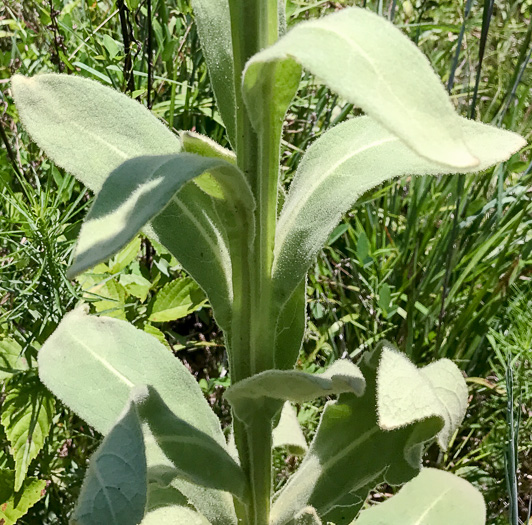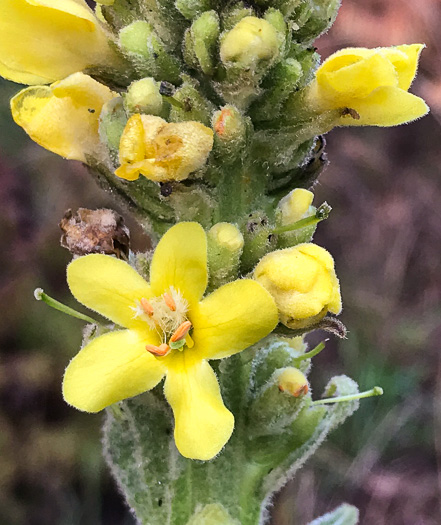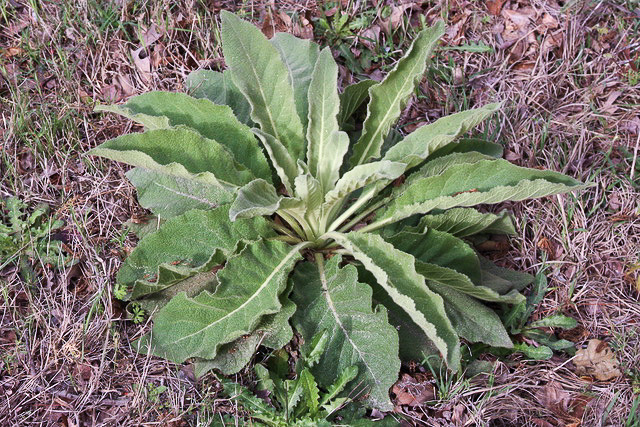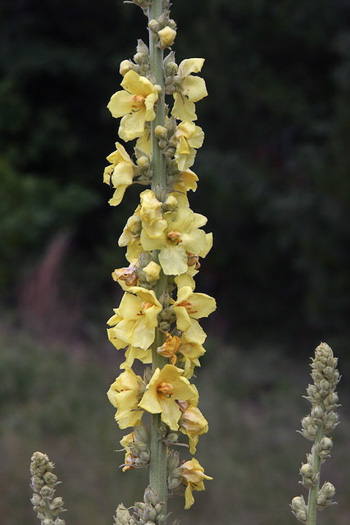Your search found 22 image(s) of Clasping Mullein, Moth Mullein, Wand Mullein, and Woolly Mullein.
To see larger pictures, click or hover over the thumbnails.
To go to the plant's detail page, click its name.
 Habitat: Fields, roadsides, disturbed areas
Habitat: Fields, roadsides, disturbed areas
Cauline leaves glabrous, crenulate to dentate-serrate, per Vascular Flora of the Carolinas (Radford, Ahles, & Bell, 1968).
Flowers yellow or white; the 5 fertile stamens w woolly purple filaments, per Wildflowers of Tennessee, the Ohio Valley, and the Southern Appalachians (Horn, Cathcart, Hemmerly, & Duhl, 2005).
Hairs of the calyx & upper stem simple & glandular; pedicels longer than calyx, per Weakley's Flora.
The terminal raceme is long and loose with a single flower at each node, per Wildflowers of Tennessee (Carman, 2005).
 Habitat: Longleaf pine sandhills, sandy disturbed areas, roadsides
Habitat: Longleaf pine sandhills, sandy disturbed areas, roadsides
Leaves may be hairy or may not [vs. leaves of V. blattaria glabrous], per www.CalFlora.net.
Cauline leaves are lanceolate, crenate and sessile, per www.CalFlora.net.
If you see multiple flowers [fruit] per node, it is virgatum not blattaria, per www.CalFlora.net.
Glandular hairs dense on the leaves and on the stems, per Weakley's Flora (2015).
Pedicels 1-3mm long, shorter than the calyx [vs. those of V. blattaria longer], per Weakley's Flora.
The fuzzy stamens resemble a moth's antennae, hence one common name, per Wildflowers of the Carolina Lowcountry (Porcher, 1995).
 Habitat: Fields, roadsides, disturbed areas, sometimes weedy on rock outcrops
Habitat: Fields, roadsides, disturbed areas, sometimes weedy on rock outcrops
Leaves densely woolly hairy, in a basal rosette & alternate spiral on stem, per Forest Plants of the Southeast and Their Wildlife Uses (Miller & Miller, 2005).
Basal & lower stem leaves with blades basally attenuate (vs. V. phlomoides distinctly petiolate), per Weakley's Flora (2023).
Inflorescence dense and spike-like (at least initially), per Weakley's Flora (2023).
Middle to upper stem leaves sessile, decurrent down the stem to the next leaf, per Weakley's Flora (2023).
Corolla yellow and 5-lobed, 15-25mm wide, within woolly 5-lobed sepals, per Forest Plants of the Southeast and Their Wildlife Uses (Miller & Miller, 2005).
 Habitat: Disturbed areas, roadsides, longleaf pine sandhills (if left unburned)
Habitat: Disturbed areas, roadsides, longleaf pine sandhills (if left unburned)
Leaves densely tomentose; basal and lower stem leaves distinctly petiolate, per Weakley's Flora (2023).
Middle to upper stem leaves sessile to auriculate-clasping, slightly or not at all decurrent, per Weakley's Flora (2023).
Similar to V. thaspus, but often branched and the inflorescence interrupted, per Wildflowers of the Southern Mountains (Smith, 1998).


